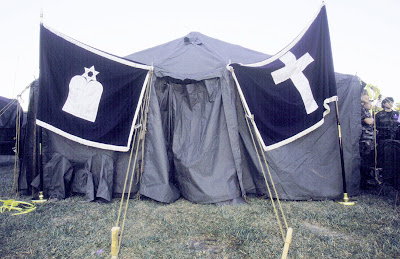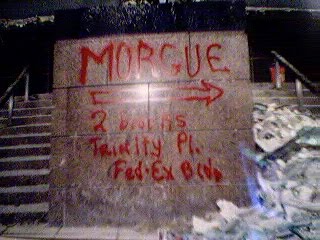
The propagandistic "big lie" of the official story of the attacks of September 11th, 2001, is made up of thousands, if not tens of thousands, of individual, smaller lies. In their collective variety and audacity, and in their routine shamelessness, they once could apparently carry the day. But by some stroke of fate or divine justice we are now able to see the galling quality of these small lies as manageable narrative elements---bits which can add up to awaken an arrested and somnambulate American populace loath to see the horror and admit the truth. We did not dream our government and the hidden powers-that-be could stoop so low on a scale so vast, but now, all together, somehow, we must.
A good place to start is with Brian Birdwell, one of the six "serious" burn victims to come out of the Pentagon following the attack. His story is so full of holes it resembles Swiss cheese, but at least he wears his motivation on his sleeve---a slavish devotion to a fundamentalist God, his Lord and savior, the risen Jesus Christ, who simply must be believed in, if his teachings not obeyed. It is in that specific context that our present day reality is made into such an absurdity---the first shall be last, indeed.
It's been staring us straight in the face. Here, for instance, is a relatively up-to-date photograph of Brian Birdwell:
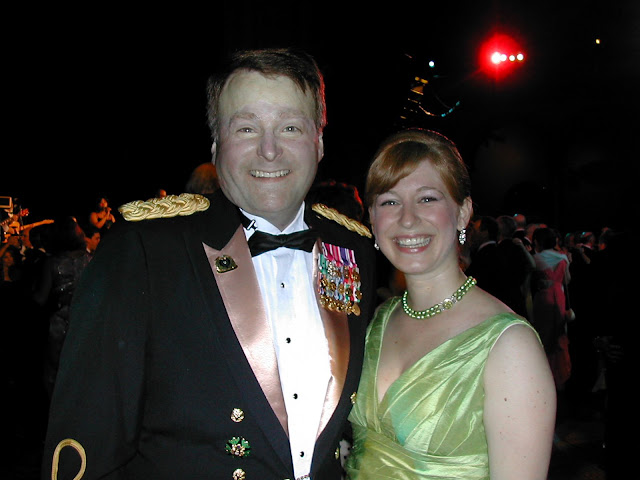
In the 2004 book by Brian and Mel Birdwell,
Refined by Fire, ghostwritten by Ginger Kolbaba, the voice of Mel tells us:
"Soon after Brian received the cadaver skin graft on his forehead, he told me, 'Enough is enough.'"
In
The 'Other' Tragedy - US News and World Report, published December 2, 2001,
"Cadaver skin. You can see that in Brian Birdwell, who mouthed the words "I love you" to his wife, Mel, when he opened his eyes for the first time September 13. That same day, President Bush visited the Fort Worth native. "Colonel Birdwell," the commander in chief said as he strode into the hospital room. With tears in his eyes, the president saluted the bandaged soldier, holding it until Birdwell slowly raised his burned arm as high as he could to return the salute. Birdwell, burned over 40 percent of his body, saw himself in the mirror recently--his forehead plastered with cadaver skin, the tips of his ears singed off, the delicate skin around his eyes stretched out. His sense of humor was intact. "I think I look pretty good for a guy who just got run over by a plane," he said, grinning."
And in the Washington Post article,
Hope Breathes Beneath Wounds: Bodies Ravaged by Terrorism, Survivors Savor the Small Steps, by Donna St. George, published on the front page, also on December 2, 2001;
"By the grace of God, I'm still here," he said, sitting stiffly in a chair, his bandaged arms propped on pillows and his forehead a band of scab-pocked temporary skin.
"His wife does not mind saying that this skin came from a cadaver. It protects him from infection until his own skin can be grafted there. Amid the horrors Birdwell has endured, cadaver skin is nothing to wince at – a medical necessity, a wound dressing."
Six months after the Pentagon attack, Birdwell wears his uniform with a headband and compression gloves---as in this Mark Wilson photo of the White House memorial taken March 11, 2002, for Getty Images:

He still does, four months after that, at a luncheon with Mel on July 18th, at the Ft Myer Officer’s Club. Birdwell seems to have taken to this sartorial style the way General Peter Pace took to wearing a flattering diagonal sash on formal occasions. What function did the headband perform beyond obfuscation?

I recall asking myself at the time as I read about the cadaver skin,
WWMPSD? What would my plastic surgeon do? If I only had a small amount of tender buttocks flesh for instance, with which to effect skin grafts, wouldn't I want that transplanted to my face first?
It becomes clear to me that rather than the 39 surgeries claimed for Birdwell's recovery, he likely only had two: one which disfigured his ears, creating that "melting away" look so at odds with a full head of hair, and a ghastly botched tracheotomy scar to his neck---a remnant of the device useful for 28 days to avoid close examination of his supposedly fuel-damaged lungs.
This must indicate a level of complicity with some in the medical establishment on a par with that of journalists and others in the media.
My hypothesis is borne out in a low-resolution video originally found on the Birdwell's Christian burn organization web site,
Face the Fire. If you look closely you'll see that Birdwell's hair line has been shaved beyond the crown of his head. The line we can see still today on his face, between what appears to have been a light, allover chemical burn rising to just above his eyebrows, demarcates a frankly unmarred forehead, an area which has been disguised by a dressing of iodine-colored salve that mimics the look of wounds (and incidentally, Satan's horns.)
But that dressing stupidly ends up at a midway point, leaving the white skin under his shaved scalp, as if his hair had burned away, but in the process, protecting the skin underneath!
How could half of Birdwell's ears have melted away and not been reconstructed, but still leave the nearby hair follicles healthy? Perhaps he should sue his plastic surgeon for malpractice.
"More than 30 surgeries later, Birdwell has regained some of his former appearance, including a full head of brown hair. Still, his wife, Mel, notices how people sometimes stare. His ears, about half their normal size, appear almost melted. His face and neck are ridged with scar tissue. His arms do not bend normally. Neither do his hands." http://stacks.msnbc.com/news/964915.asp?0sl=-42

A
Democratic Underground thread from August 2003 by the diligent DulceDecorum, addressed this hair issue with acute passion, but regardless of how clear the implications were back then, they were unspeakable until recently.
I posted a blog on January 04, 2007,
Brian Birdwell: How to Serve Man, but I delayed posting it for some time before then. My shock at the revelation of the true nature of the beast needed to wear off first: that is, Brian Birdwell, along with the others "burned" that day---including all the victims in New York City---were morally repugnant volunteers. The necessary components of a planned narrative myth requiring such liminal survivorships.
In addition to the constantly repeated talking point of his cadaverous forehead, was another equal to it: "the gold wedding band saved from hell" routine.
LTC (Ret.) Brian Birdwell at GOP convention Monday, June 12, 2006, 03:32 PM Comments as Prepared for the Republican Party of Texas State Convention, June 2, 2006 Copyright by LTC (Ret.) Brian Birdwell
"Inside the emergency room at Georgetown University Hospital, it was like a battle drill, lots of activity, voice commands, energy and intensity, but no chaos. Dr Williams told me that he would shortly put me under general anesthesia, so I knew in my heart I was speaking my last words. I told Dr Williams I wished to do two things. I asked MAJ John Collison, who had ridden with me to the hospital to take the wedding ring off my finger and give it to Mel and tell her that I loved her. Jewelry is normally cut off burn survivors since gold melts near 800 degrees, but I didn't want the ring destroyed. When the nurse removed it to give it to John, it was like running an overdone hot dog through something of a smaller diameter except the hot dog was my blackened fingers. Since most of the skin was already gone, when the ring was pulled off, it showed exposed bone and blood was streaming everywhere. I don't recall it hurting; not because of the morphine shot I was given at the Pentagon, but because I was concentrating on the dignity of what I knew was my immanent death. I then asked for the hospital chaplain to say a final prayer acknowledging God's sovereignty in my life and accepting his will for me should I awake or not from the anesthesia. After Chaplain Cirrilo lead that prayer I then told Dr Williams, not from the strength of a soldier, but with faith in my Savior, "lets get on with it," resting in the comfort of Christ's command of my life."
National Commission on Terrorist Attacks Upon the United States Public Hearing Monday, March 31, 2003
"Inside Georgetown University, I had yet another seminal moment. Major John Collison had accompanied me to Georgetown. I knew that when Dr. Williams, the attending physician there, told me they were soon to place me under general anesthesia and intubate me that he was going to do the best he could to save my life. But I also knew that I was facing, in being under anesthesia, that my last words were maybe those that I now speak.
"I asked John to take the wedding ring off my finger. It removed skin, it removed muscle, it removed other tissue, but I don't recall it hurting. I don't know if that was because of the morphine that I received from Dr. Baxter or because I was more concerned with the manner of my death and how my life or my death was going to give witness to those on the medical staff.
"John took the ring off. I looked at the hospital chaplain and asked to say a prayer, a prayer of salvation, actually, rather, sovereignty of God in my life, not of salvation. We said that prayer. And after that prayer I had the peace of God's concern in my life and his sovereignty in my life to look at Dr. Williams and say, let's get on with it, resting in his sovereignty."

CNN.com - Transcripts Aired May 4, 2006
KYRA PHILLIPS: Brian, let's start with you. And what do you think is probably your most vivid memory from 9/11?
BIRDWELL: Being at the Georgetown University Hospital just prior to being anesthetized and knowing in my heart that I was dying and that I was saying my final words, having a friend of mine take my wedding ring off of my burned hands. Didn't have the chance to talk to my wife, but was making final peace with my creator and with the lord. And that's probably the most seminal of the moments that I experienced of many that day.
Refined by Fire - Google Books Result, page 93
"Before we entered Brian's room, [Col.] TW [Williams] pulled me aside and handed me something. I looked down at his hand. It was Brian's wedding ring. As soon as TW handed it to me, I put it on and wore it next to my wedding ring. I decided I would return it to Brian after he was discharged from the hospital.
"I wasn't aware of the exchange Brian and John Collison had with the ring or the significance of the way it was removed because John had never mentioned it. His visit had been too emotional. But I knew that John had received Brian's ring at some point I just wasn't sure when."
In a
Publisher's Weekly review of the Birdwell book:
"The Birdwells relate Brian's horrific injuries and treatments in a way that might turn some stomachs (skin coming off with his wedding ring..."
But in
Refined by Fire, Birdwell's version seems to meld the inconsistencies of the storyline he told the 9/11 Commission:
"Then I could see John Collison standing behind Dr. Williams, so I called for him to come to me. I asked him to take off my wedding ring. Because my skin was burned so badly, a nurse, Judith Rogers, had to do it. Some of the skin came off with the ring. Then Judith handed the ring to John.
"John," I said, "you make sure my wife gets this ring."
"Yes Sir, I will" he said.
"I knew there wasn't much time. While I wanted to talk with Mel, to hear her voice one last time, I knew calling her would have prolonged the trauma, and we were out of time. So I made my peace with her when I gave John the wedding ring to pass to her."

Sloppy master planning has Birdwell's youthful 9/11 matinee-idol victim competition, Kevin Shaffer, having a nearly identical wedding band story in the public record!
Crawling Toward the Light by Bryant Jordon
"My hands were badly burned," he said. "My arms were very badly burned. I knew I needed help."
A nurse assessed his condition in the emergency room. At some point she may have said Shaeffer was burned about 50 percent, but what he heard was that his chances were 50 percent.
"I grabbed that nurse by the shirt. I pulled her close. I told her, 'You don't understand. I'm alive. I'm alive. I made it. I'm going to live.' She said, 'Yes, Kevin. You are. You are.
"After that I remember them working quite hard on my hands. I had my wedding ring on my left and my academy ring on my right. The doctor called out for a ring cutter. I made them stop, the entire team. … I managed to pull my wedding band off. I eventually pulled my class ring off. I handed them … to the doctor. I laid back. I said, 'Now you can go ahead - do what you've got to do. Save my life."
http://www.militarycity.com/sept11/shaeffer.html

This barely touches upon the list of anomalous and irreconcilable details in the collective narratives. For instance, both these men were first transported under mysterious circumstances to out-of-the-way hospitals before being transferred to the Burn Unit at Washington Hospital. Schaeffer went to Walter Read, while Birdwell left Georgetown Hospital by helicopter less than six hours after he arrived---despite all airspace being shut down.
I think that conspiring physicians and nurses were planted at Georgetown to cleanup evidence of Birdwell's forensic medical condition. For instance, from
Refined by Fire, with Mel speaking:
"Moments later the police car pulled up to the Georgetown emergency room entrance and dropped me off. I quickly wiped my eyes and face with my hands, thanked the officers, then stumbled out of the car. There at the door stood a physician and Judith Rogers, the nurse who had called me more than two hours earlier.
"Judith was waiting for me. "Okay,"she said gently, putting her arm around me, "let's go." As we walked she explained that a burn/trauma specialist resident and a burn staff nurse, who both had recently transferred from the Burn Unit at Washington Hospital, were working on Brian. The nurse, Debi Trichel, was washing him down to remove the remaining traces of jet fuel that were on him, as well as making sure his head was propped up to reduce the swelling since that would further challenge his airway. She had also finished removing the dead skin, with scissors, and was redressing him with new bandages."
Further proof is provided by an extremely odd public relations stunt two days before they launched their book, when Brian and Mel went back to Georgetown Hospital "to thank nurse Debi Trichel," and others, for the six hours of care they provided Brian. The giveaway making the agenda clear was captured in a Washington Times story by Frank Petrignani, from July 2, 2004, about the reunion, in
9/11 victim thanks hospital workers; Ex-officer treated at Georgetown,
"What I will remember vividly for the rest of my life is the smell of jet fuel embedded into him and his clothes," said Dr. Michael Williams, then director of trauma and critical care at Georgetown University Hospital in Northwest."
I should think Birdwell would feel more gratitude for the many months of care he received at Washington Hospital. So it's likely these Georgetown players---Dr. Williams, "another attending physician," Dr. Clark, as well as Judith Rogers and Debi Trichel, were all key co-conspirators before the fact. Intimately involved in massaging the narrative, rather than dressing a patient's nonexistent wounds
Dr. Joy Drass, president of Washington Hospital, Dr. Marion Jordon, Director of the Burn Center and Dr. James Jeng, Brian's primary burn surgeon there, who is described in
Refined by Fire as "a Reserve Navy Commander...familiar with military policies and procedures," may or may not be on a different plane---pun intended---but Colonel Dana Rota, who Mel describes as being "my right-hand man," definitely sounds like her foreknowledged handler.
But some medical professionals were heroes, as they brought these discrepancies to light in whatever limited fashion they could, which caused these developments---and it is the cover up, not the crime, that catches people out we are told.
The problem with men like Brian Birdwell and Kevin Shaeffer, as well as others, is they are by faith and training lightweight pussycats. Neither allowed for the courage required to undergo a believable wounding by fire. Out of the six Pentagon burn victims, only Louise Kurtz can be said to have suffered enough for us to have invaded two countries and killed a million innocent Muslims in revenge. Women often are losers in the games of power, aren't they Brian? Louise was only on her second day of a new job on 9/11, certainly not hooked up with general Van like you were. Shouldn't your hand look this way?
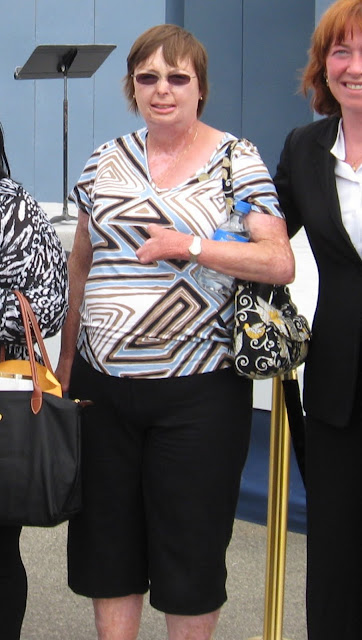
(Perhaps Antoinette Sherman, the only victim said to have died outside of the Pentagon, could serve as a backup---but it's an open question if her death might still have been faked---given the ability of various authorities to collude with the federal government. But she succumbed to smoke inhalation, in any event.)

Standing room only crowd hears Birdwell speak on the 2007 anniversary. Although I am not an authority on the subject of men's hands, I would rank Brian's as really quite beautiful.

Sept. 11, 2007

Brian sums up his religious feelings at the end of the five-minute video posted above:
So, is it worth it? Absolutely. To have one more soul in heaven because of what I've gone through---absolutely. But let me tell you why I say that with such strength. It's because, for at least, I would guess, 45 seconds, to a minute, to two minutes, I was in an earthly hell, burning. I know what it is like to be burning. And it is not something I would want to live through eternally. You cannot imagine the torment of being in a fire, living through it. Not knowing if you're going to get out, and not appreciate what it means to save one soul.
And elsewhere:
"Birdwell described how his Christian faith carried him through the attacks and his recovery. He then demonstrated his belief that Christian moral values are what led America to greatness, beginning with the creation of the Declaration of Independence and leading up to current President Bush, who he praised for his determination and moral character. He also spoke on the moral uprightness of the American military and denounced detractors of the war in Iraq." Sept. 11 survivor tells how faith helped recovery | The Post-Tribune, Indiana, Nov. 15, 2004
"Days after the attack, President Bush and the first lady visited the couple in the hospital. Mrs. Birdwell recalled how Mr. Bush saluted the colonel and asked if he could pray for his family. "The leader of the free world had made time in his busy schedule to comfort us," she wrote in the book. "He and the first lady were so real, their compassion so genuine, and he was a man of God."
"Col. Birdwell said he fully agrees with Mr. Bush's actions following the terrorist attacks that nearly took his life. He believes the country must go on the offensive to prevent the loss of American lives.
"This isn't about American soil," he added. "It's about American blood." Survivor looks to heal others; 9/11 victim puts his story in book | The Washington Times July 4, 2004
"With new resolve, Brian managed to find help and make it to the triage area. There a woman read the Psalms to comfort him. Brian’s face was so badly burned a co-worker knew him only by his ID badge. His friend commandeered a SUV and drove Brian to Georgetown University Hospital." The 700 Club by Tim Branson, March 15, 2002
"Fires were burning and debris was scattered everywhere. Smoke was pouring down the hallway. Birdwell's access badge and name tag were melted, he was covered in blood, and his clothes were literally burned from his back." 9/11 Survivor Returns to Tell Story of Hope | US Fed News Service, Sept. 11, 2007
"While he deems it his responsibility as a Christian to "forgive those that perpetrated what they did to me," Mr. Birdwell said, "I can't sit here and tell you that I've forgiven them." The former artillery officer and logistician backs President Bush's war on terrorism. "My duty as a citizen is to support my government in defeating the culture that bred, recruited, trained, deployed and financed people that ... believe it rational to fly planes into buildings," he said. Hope springs from fires of 9/11: Pentagon burn victim focuses on blessings, helping others recover, September 7, 2006, by Richard Whittle/ The Dallas Morning News

To this I would like to counter with some words of Henry David Thoreau:
"Action from principle -- the perception and the performance of right -- changes things and relations; it is essentially revolutionary, and does not consist wholly with anything which was. It not only divides states and churches, it divides families; ay, it divides the individual, separating the diabolical in him from the divine."

"Under a government which imprisons any unjustly, the true place for a just man is also a prison."
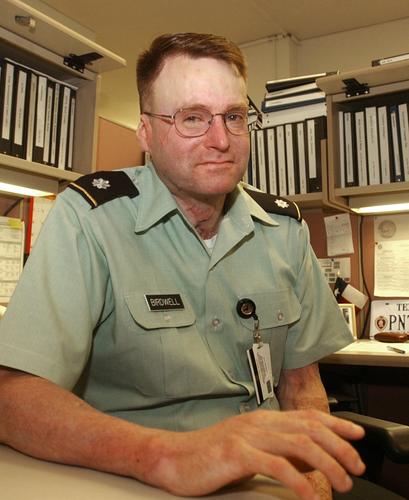
"Aim above morality. Be not simply good, be good for something."

"John Yates, a civilian Pentagon employee, has a new daily ritual.
"Every morning when I wake up I just look up and I say thank you," said Yates, a security manager in the Army personnel office.
"Yates, who was in his second-floor office, had just talked to his wife and was watching TV coverage of the World Trade Center attack when he heard an explosion and saw flames. Knocked to the ground, he crawled first toward voices, then eventually to safety.
"But the five-month anniversary of the event that severely burned a third of his body, from his head down to his legs, almost slipped by without his noticing." Pentagon Burn Victims Healing Wounds, Article from AP Online | Feb. 19, 2002
 But then a low-case poster to the board named brianv, (and that better not be a sock puppet of yours, Miranda Priestley! I'll spit!) drew our attention to a "personal fave. A 'Bob the Builder' Model Studio of the Pentagon!! See the guys in the top right hand corner!!" http://upload.wikimedia.org/wikipedia/comm..._crach_site.jpg
But then a low-case poster to the board named brianv, (and that better not be a sock puppet of yours, Miranda Priestley! I'll spit!) drew our attention to a "personal fave. A 'Bob the Builder' Model Studio of the Pentagon!! See the guys in the top right hand corner!!" http://upload.wikimedia.org/wikipedia/comm..._crach_site.jpg But I wouldn't treat those figures so lightly, dear. I know them better from a reverse view, and I think they are doing something highly significant.
But I wouldn't treat those figures so lightly, dear. I know them better from a reverse view, and I think they are doing something highly significant. Also fraudulent is the engineering study which followed, which proposed introducing additional fire breaks. It is a complete and total lie! Bad consultants!
Also fraudulent is the engineering study which followed, which proposed introducing additional fire breaks. It is a complete and total lie! Bad consultants!